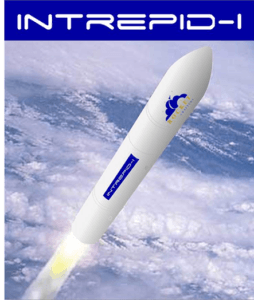 We’ve heard a lot about 3D printed rockets and rocket components over the last few years, thanks largely to NASA’s ongoing efforts to create the first fully 3D printed rocket engine. One thing I never even thought of, however, is 3D printed rocket fuel. It doesn’t sound possible – but as we keep learning, almost nothing is impossible to 3D print, and a Florida-based company named Rocket Crafters, Inc. (RCI) was just granted a patent for, yes, 3D printed rocket fuel.
We’ve heard a lot about 3D printed rockets and rocket components over the last few years, thanks largely to NASA’s ongoing efforts to create the first fully 3D printed rocket engine. One thing I never even thought of, however, is 3D printed rocket fuel. It doesn’t sound possible – but as we keep learning, almost nothing is impossible to 3D print, and a Florida-based company named Rocket Crafters, Inc. (RCI) was just granted a patent for, yes, 3D printed rocket fuel.
Admittedly, the fuel grains created by RCI aren’t exactly what you might typically picture when you think of fuel. Rather than liquid or gas, fuel grains are large tube-shaped structures that act as both solid fuel and combustion chambers for hybrid rocket engines. The engines are designed by combining the solid fuel grains, often created from materials like rubber or wax, with a liquid oxidizer.
The patent was granted to RCI co-founder, President and CEO Ronald Jones, who developed a method for designing and fabricating fuel grains for hybrid rocket engines using additive manufacturing technology. The fuel, according to RCI, is less expensive and safer to handle than other types of fuel grains, while offering excellent performance.
Using 3D printing allows for the fabrication of precise internal geometric patterns that greatly increase the amount of fuel available for combustion on a second-by-second basis. The design also eliminates excessive vibration, one of the most common issues of hybrid rocket engines.
“This revolutionary patented technology enables for the first time the use of much safer, consistent performing hybrid rocket engines to power orbital launch vehicles,” Jones said. “The fuel grains we are able to produce using this technology provides the structural strength needed to minimize vibration build-up while still enabling the rocket engine to consume high energy solid fuel blends at an accelerated pace.”
The 3D printed fuel will allow for the design of a safe, less expensive launch vehicle with only two moving parts. According to Jones, 3D printing the combustion chamber will allow RCI’s expendable motors to launch small satellites into orbit at half the cost of current launch costs.
 RCI is currently in the process of developing the Intrepid-1, the first mass-producible orbital launch vehicle powered by rocket engines using Jones’ new 3D printed fuel technology. The company is on track to incorporate the engines into orbital launch vehicles in 2019.
RCI is currently in the process of developing the Intrepid-1, the first mass-producible orbital launch vehicle powered by rocket engines using Jones’ new 3D printed fuel technology. The company is on track to incorporate the engines into orbital launch vehicles in 2019.
“RCI continues to innovate. This new patent shows our commitment to making access to space safer, more reliable, and more affordable than ever before,” said former NASA astronaut and retired Sandia National Laboratories executive Sid Gutierrez, Chairman and CEO of RCI. “I have believed for years that hybrid rockets, due to the inherent safety when propellants are protected against accidental detonation by storing them in different states, could be the solution to make rocket powered flight as safe as airline travel one day. With our 3D printed fuel technology, we now have the means to make this a reality.”
The patent for the 3D printed fuel (Patent US 9,453,479) is the latest in a growing collection of patents and pending applications for RCI. Discuss in the Rocket Crafters forum at 3DPB.com.
Subscribe to Our Email Newsletter
Stay up-to-date on all the latest news from the 3D printing industry and receive information and offers from third party vendors.
You May Also Like
Profiling a Construction 3D Printing Pioneer: US Army Corps of Engineers’ Megan Kreiger
The world of construction 3D printing is still so new that the true experts can probably be counted on two hands. Among them is Megan Kreiger, Portfolio Manager of Additive...
US Army Corps of Engineers Taps Lincoln Electric & Eaton for Largest 3D Printed US Civil Works Part
The Soo Locks sit on the US-Canadian border, enabling maritime travel between Lake Superior and Lake Huron, from which ships can reach the rest of the Great Lakes. Crafts carrying...
Construction 3D Printing CEO Reflects on Being Female in Construction
Natalie Wadley, CEO of ChangeMaker3D, could hear the words of her daughter sitting next to her resounding in her head. “Mum, MUM, you’ve won!” Wadley had just won the prestigious...
1Print to Commercialize 3D Printed Coastal Resilience Solutions
1Print, a company that specializes in deploying additive construction (AC) for infrastructure projects, has entered an agreement with the University of Miami (UM) to accelerate commercialization of the SEAHIVE shoreline...































